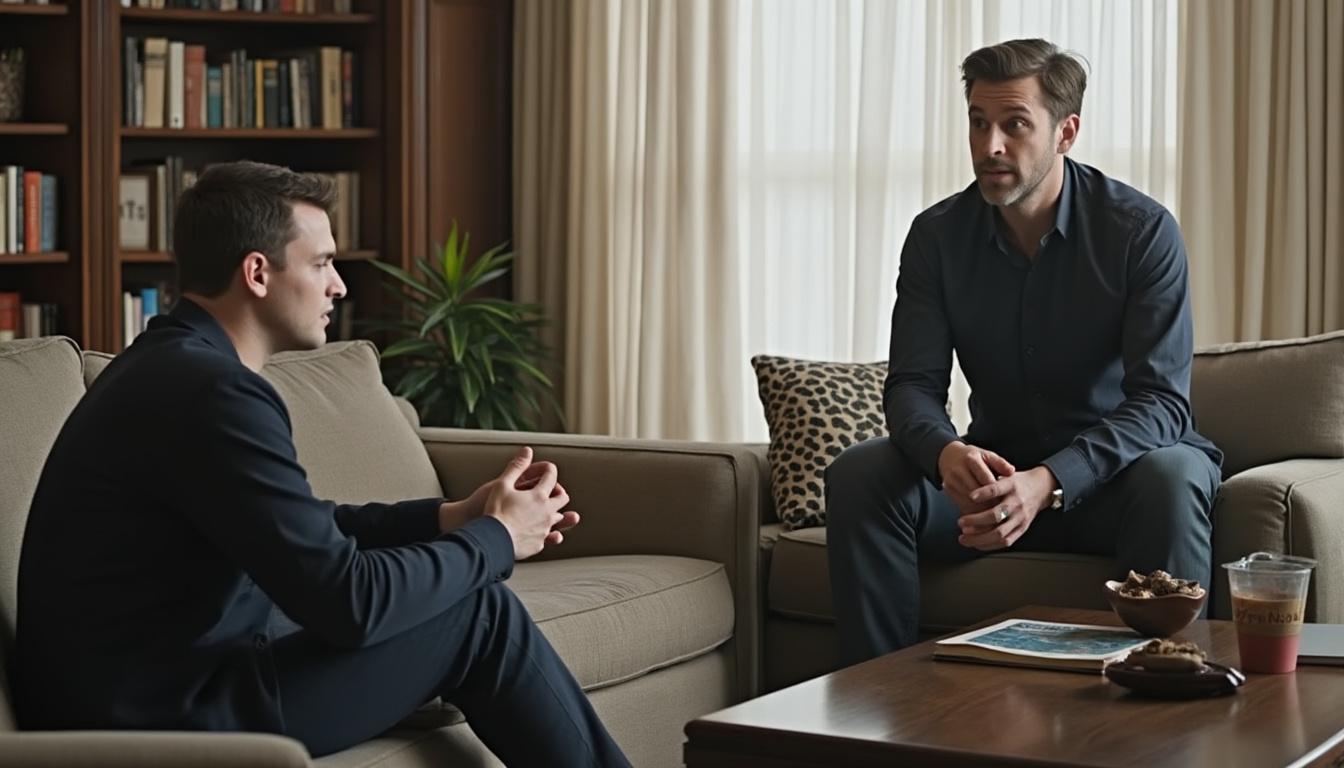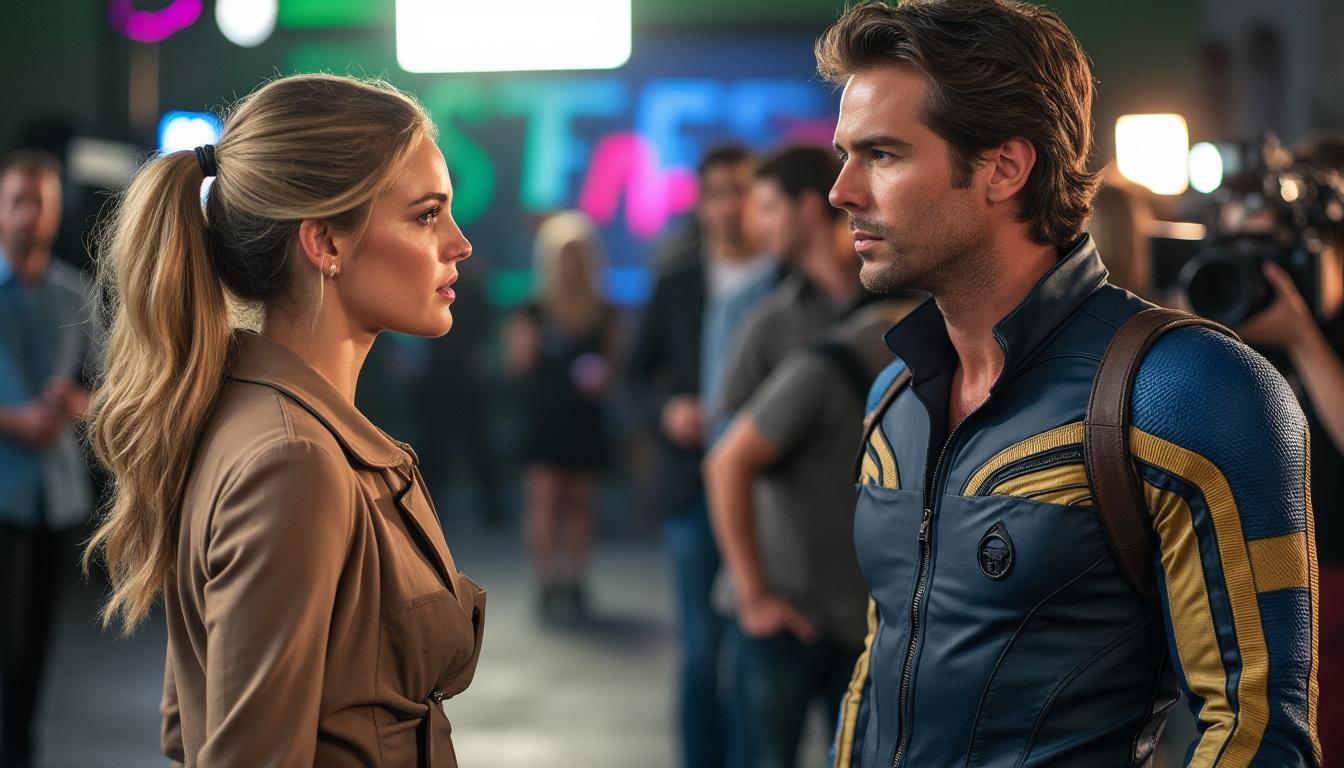A new chapter has unfolded in the intricate narrative surrounding the film production of “It Ends with Us.” Behind the glamorous façade of Hollywood, tensions often simmer, and revelations emerge long after the final credits roll. Recently, Thomas Canestraro, a stunt double for Justin Baldoni, spoke candidly about the atmosphere on set, particularly regarding his co-star Blake Lively’s demeanor during the filming process. His account sheds light on the complexities of working relationships in the movie industry, and the challenges actors face even in their emotional lives as they step into different characters. This behind-the-scenes perspective not only highlights the integrity of the acting profession but also contributes to ongoing discussions surrounding the film and the legal conflict tied to it.
The Transition of Lively’s Demeanor
During an exclusive interview with the Daily Mail, Canestraro disclosed that Blake Lively’s persona changed notably as production progressed towards its later stages in early 2024. Initially, Lively was known for her vivacious and approachable nature; however, reports indicated a significant shift during the shooting of “It Ends with Us.” This transformation has piqued the interest of fans and industry watchers alike, highlighting the demanding emotional labor actors endure while on set.
Canestraro described Lively as appearing “closed off” during the last weeks of filming, which starkly contrasted his past experiences working alongside her during the movie “A Simple Favor.” There, he found her to be engaging and easy to collaborate with. The abrupt shift in Lively’s behavior prompted speculation about the various pressures that could contribute to such a change. Canestraro noted, “There was some discomfort from everybody.” This sentiment implies a collective atmosphere of unease that hung over the crew.
Factors Influencing On-Set Atmosphere
Several factors may have contributed to this noticeable tension within the production environment. Actors often grapple with personal dynamics as they navigate professional relationships, especially when complex themes are involved. The pressures of portraying deeply emotional and fraught narratives can weigh heavily on performers, impacting their mental well-being.
- Extended shooting schedules: Canestraro originally signed on for just five days but found himself working for two weeks due to limited production timelines. This escalation suggests a typical challenge within the film industry, where time constraints can amplify stress levels for all involved.
- Emotional depth of the narrative: “It Ends with Us” deals with sensitive themes of love, trauma, and resilience. Such weighty subjects can understandably affect actors’ moods and interactions during shoots.
- Interpersonal dramas: Compounding factors like rumored disagreements amongst the cast can create a charged atmosphere. According to close sources, Blake Lively’s reserved attitude was, in part, a response to alleged sexual harassment claims made against Baldoni post-production.
Given these revelations, it becomes clear that Lively’s demeanor on the set was likely shaped by a confluence of personal and professional factors. Understanding this context adds layers to her performances and invites the audience to appreciate the emotional labor behind the scenes.

Impact of Ryan Reynolds on Set Dynamics
Interestingly, in the midst of tensions on set, the presence of Ryan Reynolds, Lively’s husband, provided an added layer to the unfolding story. While his visit to the set was initially seen as a supportive gesture, reflections on its potential implications have led to further questions concerning the environment in which the film was created.
During his visit, Canestraro expressed that he found it “cool,” highlighting the camaraderie often found on film sets, but looking back, he re-evaluates its significance as it pertains to Lively’s emotional state at the time. This connection illustrates another intricate layer of interaction that influences set dynamics, where familial ties can either uplift or inadvertently add pressure to the performers involved. Reynolds’ involvement underscores the blending of personal and professional spheres that characterizes much of Hollywood’s landscape.
Audience Reactions and Insights
The audience’s understanding of behind-the-scenes interactions enhances appreciation of the film, prompting fans to reflect on how relationships yield both conflict and collaboration in cinema. Watching actors like Lively and Baldoni parse emotionally charged narratives through the lens of their personal struggles can reshape viewer expectations, fostering a newfound respect for their artistry.
As discussions about “It Ends with Us” continue, along with revealing footage and updates regarding the ongoing legal disputes, audience members are actively engaged in dissecting the motivations and grievances behind public personas. Canestraro’s insights allow for a deeper examination into how actors’ emotional states play a crucial role in character development on screen.
| Factors Affecting On-Set Dynamics | Potential Effects |
|---|---|
| Extended shooting schedules | Increased stress and fatigue among cast and crew |
| Emotional depth of the narrative | Pervasive mood shifts and heightened tension |
| Interpersonal dramas | Strained relationships impacting team cohesion |
| External visitor presence (e.g., Ryan Reynolds) | Potential support or added pressure for cast members |
Blake Lively’s Professional Journey and Characterization
The way Blake Lively is perceived stems not only from her portrayals on-screen but also from her personal narratives and the characters she embodies within her films. Her artistic versatility and ability to adapt are quintessential in an industry that prides itself on fresh interpretations and compelling storytelling. However, the emotional toll of such adaptability cannot be overlooked and plays a crucial role in shaping her off-screen demeanor.
In analyzing Lively’s evolution as an actress, it’s essential to recognize the significant roles she has undertaken. Each character contributes uniquely to her career and allows her to navigate diverse facets of acting. Particularly in projects such as “Gossip Girl,” “A Simple Favor,” and “It Ends with Us,” Lively showcases her capacity for portraying complex, multi-dimensional characters that resonate with audiences.
Emotional Labor in Acting
The concept of emotional labor in acting is vital, especially regarding Lively’s experiences. Emotional labor refers to the process by which actors invest personal emotions into their characters to cultivate authenticity, all while managing the external pressures of filming. This complex layering of performance can lead to substantial emotional strain when actors confront challenging materials that echo their own lives.
- Character preparation: Actors often immerse themselves in their roles, researching backgrounds and emotional states to present genuine portrayals.
- On-set pressures: The desire to deliver the best performance amplifies stress, particularly under challenging circumstances.
- Personal emotional well-being: Balancing the demands of acting with mental health is crucial for sustaining long careers in the industry.
As Lively navigates these pressures, her evolving portrayal allows audiences to glean a deeper understanding of the actor’s complex relationship with their craft. While challenges are ever-present in Hollywood, they also forge powerful narratives that reflect the struggles and triumphs of industrious and passionate artists.
Unfolding Legal Disputes and their Ramifications
The ongoing legal drama involving Blake Lively and Justin Baldoni has added further complications to the already tense atmosphere surrounding this film project. After wrapping filming, Lively leveled allegations of sexual harassment against Baldoni, which have only intensified the scrutiny on both their professional images and the film itself. Clash of artistic expression versus personal safety has generated significant media coverage, magnifying how intricate relationships impact public perception.
As both parties navigate their claims, repercussions continue to unfold for the broader cast and crew involved. Legal disputes can tarnish not just individual careers, but the reputation of the entire project. Factors such as audience perception and box office success often hinge upon public sentiment concerning controversies affecting lead actors. Facing the juxtaposition of artistic endeavors and interpersonal conflicts is far from unique in Hollywood but remains a significant challenge for every film.
Navigating Controversy in Hollywood
Hollywood recounts a history of navigating controversies tied to public figures, often resulting in a spectrum of outcomes. How stakeholders address such events can either tarnish or rejuvenate their standing in the public eye. Isolating actors from negative press can sometimes lead to miraculous comebacks, while other times, they find themselves embroiled in lawsuits that derail promising careers.
- Industry repercussions: The fallout from #MeToo movements exposes the necessity for accountability in creative spaces.
- Artistic responses: Increased conversations about safety and self-care among professionals emphasize the need for mental health considerations.
- Public sentiment: Fans and supporters play a pivotal role in shaping brand narratives, with their reactions heavily influencing commercial outcomes.
This current saga speaks not only to the fragile nature of personal relationships found in Hollywood but also highlights a larger discourse on responsibilities and safety within the film industry. As the legal battle plays out, audiences and observers remain engrossed in the intertwined narratives forged through off-screen experiences.
| Legal Disputes Summary | Potential Impacts |
|---|---|
| Allegations of sexual harassment | Negative media coverage affecting public perception of both actors |
| Claims of creative control conflicts | Concerns over collaborative integrity within the film |
| Potential for financial repercussions | Influencing future projects and opportunities for both actors |
| Impact on crew members involved | Tension and stress among cast and crew extending beyond the main actors |


